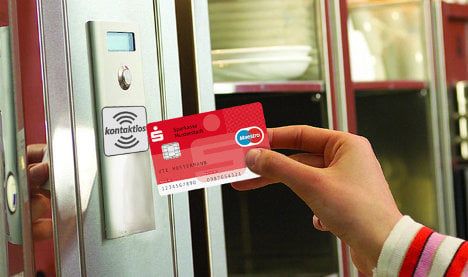The “Girogo” system, unveiled on Wednesday, will allow users to pay for items that cost up to €20 by simply waving their new debit bank card in front of a reader.
The pilot project begins in April in Hannover, Braunschweig and Wolfsburg and is backed by the powerful Sparkasse-Finanzgruppe the umbrella organisation for hundreds of savings banks operating under the Sparkasse brand.
The pilot scheme will see more than 1.3 million customers getting new bank cards which they can use at shops such as the Thalia bookseller, Esso service stations and other businesses.
If the pilot runs successfully, Sparkasse could begin replacing all customers’ 45 million bank cards this August, a process which would take until the end of 2014. The Volksbank group of banks could also sign on if the pilot project goes well, beginning in 2013.
Though touch-free payment systems have been popular in other countries where many people have credit cards, such as Australia and the United States, security fears and low levels of credit card usage have delayed their introduction in Germany.
But several German banks, including BW-Bank, DKN and Targobank are this year sending their customers cards that use Visa’s new touch-free “payWave” system. MasterCard also has introduced its own competing system.
Industry leaders admitted the Girogo system has cost more than €10 million to develop and would incur significant start-up costs, such as introducing new card readers to businesses.
But they hope that if it catches on, people will use the cards instead of lots of small amounts of cash, reducing handling costs for everyone involved.
It could also encourage consumers to buy more product that they wouldn’t normally if just paying in cash – previous studies have shown that easy-to-use credit cards and touch-free payment systems encourage consumers to spend more money.
The Local/DPA/mdm




 Please whitelist us to continue reading.
Please whitelist us to continue reading.
Member comments